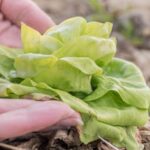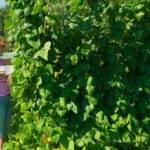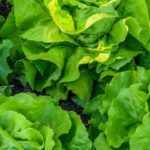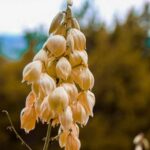As the interest in sustainable living and self-sufficiency continues to grow, so too does the popularity of vegetable gardening in Illinois. With its fertile soil, favorable climate, and a strong agricultural tradition, Illinois provides an ideal environment for cultivating a variety of vegetables. Whether you have a spacious backyard or only a small balcony, growing your own vegetables in the Land of Lincoln can be both rewarding and fulfilling.
One of the primary benefits of vegetable gardening in Illinois is the opportunity to enjoy fresh, homegrown produce throughout the year. By planting a diverse range of vegetables, you can ensure a steady supply of nutritious ingredients for your meals. Additionally, growing your own vegetables allows you to have control over what pesticides and fertilizers are used, enabling you to cultivate organic and environmentally-friendly crops.
Beyond the health and environmental advantages, vegetable gardening also offers intangible rewards. There is immense joy in witnessing the growth and development of a tiny seedling into a bountiful plant that yields delicious vegetables. The act of tending to a garden has been shown to reduce stress levels and improve mental well-being. Moreover, connecting with nature through gardening can instill a sense of pride and accomplishment as you provide for yourself and your loved ones.
In this comprehensive guide on vegetable gardening in Illinois, we will explore everything from selecting suitable vegetables for your garden to pest control methods specific to the region. Whether you are an experienced gardener or just starting out with your first plot of land, this article will equip you with the knowledge and resources needed for success. So grab your gloves and get ready to dig into the joys of vegetable gardening in Illinois.
Ideal Vegetables for Illinois Gardens
Illinois’s unique climate and soil conditions make it a great place to grow a variety of vegetables. Whether you have a small backyard garden or are part of a community garden, there are plenty of options to choose from. Here is a comprehensive list of recommended vegetables that thrive well in Illinois gardens:
- Tomatoes: Tomatoes are one of the most popular vegetables (although technically a fruit) to grow in Illinois. They require full sun and well-drained soil. Varieties like ‘Celebrity,’ ‘Early Girl,’ and ‘Cherokee Purple’ are known to do well in this region.
- Peppers: Bell peppers, jalapenos, and sweet banana peppers all flourish in Illinois gardens. These plants prefer full sun and moist, well-drained soil. Consider varieties such as ‘California Wonder,’ ‘Cayenne,’ or ‘Anaheim’ for optimal results.
- Squash: Summer squash, including zucchini and yellow squash, grows abundantly in Illinois gardens. They require full sun and fertile soil with good drainage. Varieties like ‘Black Beauty Zucchini’ or ‘Straightneck Yellow Squash’ produce excellent yields.
- Green Beans: Both bush beans and pole beans are suitable for Illinois gardens. These legumes prefer full sun and well-drained soil enriched with organic matter. Popular varieties include ‘Blue Lake Bush’ for bush beans and ‘Kentucky Blue Pole’ for pole beans.
- Lettuce: Several lettuce varieties can be grown in Illinois’s cooler temperatures during spring or fall seasons. Loose-leaf lettuce types such as ‘Buttercrunch,’ ‘Red Sails,’ or ‘Oakleaf’ are excellent choices that tolerate colder weather.
- Cucumbers: Cucumbers thrive in the warm summer months of Illinois but benefit from consistent moisture levels in the soil. Varieties like ‘Marketmore 76’ or ‘Straight Eight’ are well-suited for this region.
- Carrots: Carrots can be grown in Illinois with success, but it’s important to ensure the soil is loose and free of rocks for optimal root development. Varieties like ‘Danvers,’ ‘Nantes,’ or ‘Scarlet Nantes’ work particularly well here.
- Radishes: Radishes are a quick-growing crop that can be harvested early in the season, making them perfect for Illinois gardeners eager for early produce. Varieties such as ‘Cherry Belle’ or ‘French Breakfast’ have a great taste and mature rapidly.
- Herbs: Various herbs thrive in Illinois gardens, adding flavor and fragrance to dishes. Some popular options include basil, thyme, oregano, chives, parsley, and cilantro. These herbs appreciate full sun and well-drained soil.
Remember to consider your personal preferences, available space, and gardening skills when choosing what to plant in your Illinois garden. Experiment with different varieties and enjoy the satisfaction of growing your own fresh vegetables all season long.
Preparing Your Illinois Garden for Vegetable Planting
One of the most crucial steps in ensuring a successful vegetable garden in Illinois is proper soil preparation. Good soil quality provides the essential nutrients and drainage necessary for healthy plant growth. Before planting your vegetables, it’s important to assess the condition of your soil and make any necessary amendments.
The first step in preparing your Illinois garden is to test the soil’s pH level. Most vegetables prefer a slightly acidic pH between 6.0 and 7.0. You can easily test your soil using a DIY soil testing kit or by sending a sample to a local agricultural extension office. Based on the results, you may need to adjust the pH with lime or sulfur.
After determining the pH, it’s time to address any deficiencies in nutrients. Adding organic matter, such as compost or well-rotted manure, can improve soil structure and fertility. Spread a layer of organic matter over the topsoil and till it into the existing soil to a depth of at least 6 inches.
In addition to organic matter, incorporating fertilizers specific to the needs of different vegetable crops can provide further nutrient enrichment for optimal growth. It’s advisable to refer to fertilizer guidelines based on the specific requirements of each vegetable variety.
Proper drainage is also vital for vegetable gardening success in Illinois. If your garden has poor drainage, you may need to amend it by improving the slope or adding organic matter like compost or perlite to enhance water movement.
| Soil Preparation Step | Description |
|---|---|
| Test Soil pH | Check if soil is slightly acidic (pH 6.0-7.0). Adjust if needed with lime or sulfur. |
| Add Organic Matter | Incorporate compost or well-rotted manure into the topsoil to improve fertility and structure. |
| Address Nutrient Deficiencies | Based on soil test results, supplement with fertilizers specific to the needs of different vegetable crops. |
| Ensure Proper Drainage | If necessary, improve garden drainage by adjusting the slope or adding organic matter like compost or perlite. |
Seasonal Planting Guide for Illinois Gardeners
Illinois is a state that experiences changing seasons, which can greatly affect the success of vegetable gardening. To help Illinois gardeners make the most of their growing season, a seasonal planting guide is essential. By understanding which vegetables to plant during each season and following recommended planting dates, gardeners can maximize their harvest and enjoy fresh produce year-round.
Spring Planting
- In Illinois, spring is an ideal time to start planting cool-season crops that can tolerate some frost. These include leafy greens like lettuce, spinach, and kale, as well as root vegetables like radishes and carrots.
- The recommended month for spring planting is April. However, it’s important to keep an eye on weather forecasts and soil temperature before planting, as conditions may vary.
- To ensure success in early spring planting, consider using row covers or cloches to protect young plants from unexpected frost or cold temperatures.
Summer Planting
- Summer in Illinois brings warm temperatures and longer days, creating optimal conditions for a wide range of vegetables. It’s the perfect time to plant heat-loving crops such as tomatoes, peppers, cucumbers, zucchini, corn, and beans.
- The best months for summer planting are May and June when the risk of frost has passed and soil temperatures have warmed up sufficiently.
- Provide adequate water and mulch around plants during hot summer days to maintain consistent moisture levels in the soil.
Fall Planting
- Fall can be a productive season for vegetable gardening in Illinois due to cooler temperatures that extend the growing season. It’s an excellent time to plant cool-season crops again for a second harvest.
- Recommended vegetables for fall planting include broccoli, cauliflower, Brussels sprouts, cabbage, Swiss chard, peas, and various types of lettuce.
- Aim to start fall planting in July or August when there is still sufficient time for the crops to mature before the first frost in autumn.
Dealing with Common Pests and Diseases in Illinois Vegetable Gardens
Vegetable gardens in Illinois are susceptible to various pests and diseases that can damage or destroy crops. It is essential for Illinois gardeners to be familiar with these common issues and have strategies in place to prevent and control them effectively. By taking proactive measures, gardeners can ensure the health and productivity of their vegetable plants.
Identifying Common Pests
Insects
Insect pests pose a significant threat to vegetable gardens in Illinois. Some of the most common insects include aphids, caterpillars, beetles, and mites. These pests feed on plant foliage, flowers, and fruits, causing damage that can lead to stunted growth or complete crop loss.
Diseases
Plant diseases also commonly affect vegetable gardens in Illinois. Diseases such as powdery mildew, leaf spot, blight, and rot can weaken plants and reduce yield. Fungal pathogens are often the culprits behind these diseases, thriving in humid conditions that are prevalent during certain times of the growing season.
Preventing Pests and Diseases
Practicing Good Garden Hygiene
One of the key steps in preventing pests and diseases is maintaining good garden hygiene. This involves removing any dead plant material promptly, such as fallen leaves or uprooted plants. Regularly cleaning tools used for gardening will help reduce the spread of diseases from one plant to another.
Companion Planting
Companion planting can be an effective way to deter pests naturally without resorting to chemical pesticides. For example, marigolds planted among vegetables can repel aphids and nematodes due to their strong aroma. Additionally, planting certain herbs like basil or dill near susceptible plants may help deter pest insects.
Controlling Pests and Diseases
Natural Predators
Encouraging the presence of natural predators in the garden can help control insect pests. Ladybugs, lacewings, and praying mantises are beneficial insects that feed on pests such as aphids and caterpillars. Creating habitats for these beneficial insects, such as planting flowers that attract them or providing shelter like bug hotels, can help enhance their populations.
Organic Sprays and Remedies
If pest or disease problems persist despite preventive measures, organic sprays and remedies can be used to control them. Neem oil, which is derived from the neem tree, is effective against a wide range of insect pests and fungal diseases. A mixture of water and soap can also help suffocate soft-bodied insects like aphids.
By being vigilant in monitoring their gardens and implementing preventive techniques, Illinois vegetable gardeners can minimize the impact of pests and diseases on their crops. It is vital to strike a balance between pest control methods that protect plants while preserving the environment. With proper care and attention, vegetables grown in Illinois gardens can flourish and provide bountiful harvests throughout the growing season.
Watering and Irrigation Tips for Illinois Vegetable Gardens
The Importance of Proper Watering and Irrigation
Watering is one of the most crucial elements of successful vegetable gardening in Illinois. Given the unique weather patterns and variable rainfall amounts in the state, it’s important to provide consistent moisture to your vegetables to ensure their growth and productivity. Proper watering not only helps plants establish strong root systems but also prevents common issues such as blossom end rot and wilting.
Frequency and Timing of Watering
In Illinois, the frequency of watering your vegetable garden depends on various factors such as temperature, humidity, soil type, and stage of plant growth. As a general rule, it’s better to water deeply but less frequently rather than shallowly and often. Deep watering encourages plants to develop deep roots, making them more resilient during dry spells.
When it comes to timing, it’s best to avoid watering during the hottest part of the day when evaporation rates are high. Instead, aim to water early in the morning or late in the afternoon when temperatures are cooler. This allows plants ample time to absorb moisture before any potential heat stress occurs.
Irrigation Methods for Illinois Gardens
There are several irrigation methods suitable for vegetable gardens in Illinois. The choice largely depends on your preferences, budget, and specific needs.
Hand-watering with a hose or watering can is a simple and cost-effective method that gives you direct control over where the water goes. It allows you to target specific plants or areas that may need extra attention.
Drip irrigation systems are ideal for water conservation as they deliver water directly to the root zone through a network of tubes with emitters. This method minimizes wastage due to runoff or evaporation while delivering water precisely where it is needed.
Furthermore, soaker hoses provide another excellent option for maintaining consistent soil moisture levels throughout your garden bed. These hoses allow water to seep slowly into the soil, preventing runoff and maintaining a more even moisture distribution.
By adopting appropriate watering techniques and utilizing the right irrigation method for your Illinois vegetable garden, you can ensure that your plants receive the necessary moisture for optimal growth and productivity.
Harvesting and Storing Illinois Homegrown Vegetables
After putting in the time, effort, and care required to grow your own vegetables in Illinois, it is important to know when and how to harvest them to ensure maximum freshness and flavor. Each vegetable has its own set of signs that indicate it is ready for harvesting. By paying attention to these signs and using proper harvesting techniques, you can enjoy the fruits of your labor at their peak of quality.
When it comes to harvesting vegetables in Illinois, timing is key. It is always best to harvest vegetables when they are at their prime but before they become overripe or start to deteriorate. For leafy greens such as lettuce and spinach, harvest the outer leaves first while leaving the inner ones intact so that new growth can occur. Root vegetables like carrots and radishes should be gently pulled from the soil when they have reached a desirable size.
In terms of storage, there are different methods that work best for different types of vegetables. Some vegetables, such as tomatoes and peppers, can be stored at room temperature on countertops or in baskets away from direct sunlight. Others, like leafy greens and herbs, should be stored in airtight containers or plastic bags in the refrigerator to maintain freshness. It is important to remove any damaged or wilted leaves before storage to prevent them from spoiling other healthy parts.
By following these guidelines for harvesting and storing homegrown vegetables in Illinois, you can continue to enjoy the flavors of your garden throughout the growing season. Remember that freshness is key, so try to consume your harvested produce as soon as possible for the best taste experience. With a little bit of knowledge and practice, you will soon become an expert at reaping the rewards from your vegetable garden in Illinois.
Connecting with the Illinois Vegetable Gardening Community
One of the greatest joys of vegetable gardening in Illinois is the opportunity to connect with a vibrant and passionate gardening community. Whether you are a novice gardener or have years of experience, there are numerous local resources available that can provide support, guidance, and a sense of camaraderie.
Gardening clubs in Illinois offer a wealth of knowledge and expertise that can benefit both beginners and seasoned gardeners. These clubs often hold regular meetings, workshops, and events where members can share their experiences, exchange tips and tricks, and discuss specific challenges faced in Illinois gardening. They also organize garden visits and tours, allowing you to learn from others by seeing their gardens firsthand.
Farmers’ markets are another excellent way to connect with the vegetable gardening community in Illinois. Not only can you find an incredible selection of locally grown produce at these markets, but they also provide an opportunity to meet and converse with fellow gardeners who are selling their own homegrown vegetables.
You can gain insights into what grows well in your local area, ask questions about specific varieties or growing techniques, and even form friendships with like-minded individuals who share your passion for sustainable living.
In addition to physical communities, online platforms are becoming increasingly popular for connecting with other Illinois vegetable gardeners. Social media groups dedicated to gardening in Illinois allow individuals to ask questions, seek advice, and showcase their own successes and challenges. These digital communities provide valuable support from a wide range of perspectives within the state and can be accessed at any time convenient for you.
By engaging with the vibrant Illinois vegetable gardening community through local resources like gardening clubs and farmers’ markets, as well as virtual platforms like social media groups, you can expand your knowledge base, build relationships with fellow gardeners, and cultivate a network of support that will enhance your vegetable gardening journey in Illinois.
Conclusion
In conclusion, vegetable gardening in Illinois offers a multitude of rewards and benefits that make it a worthwhile endeavor for residents of the state. Throughout this article, we have explored the ideal vegetables for Illinois gardens, discussed soil preparation and seasonal planting guides, provided tips for dealing with common pests and diseases, shared watering and irrigation advice, and offered guidelines for harvesting and storing homegrown vegetables.
By connecting with the Illinois vegetable gardening community through local resources, gardeners can gain support and guidance from experienced individuals.
By embracing the rewards of vegetable gardening in Illinois, individuals not only have the opportunity to grow their own fresh and nutritious produce but also contribute to a sustainable lifestyle. Growing your own vegetables allows you to have greater control over what you put on your plate – free from harmful chemicals or pesticides that are often found in store-bought produce.
Additionally, there is a sense of satisfaction that comes from nurturing plants from seed to harvest and being able to enjoy the fruits (or rather, vegetables) of your labor.
Moreover, vegetable gardening in Illinois fosters a sense of self-sufficiency by reducing dependency on external sources for food. With rising concerns about food security, having access to homegrown produce can provide peace of mind knowing that you have a reliable source of fresh food right in your backyard. Not only does this save money but it also promotes resilience in times of uncertainty.
Frequently Asked Questions
When should I plant my vegetable garden in Illinois?
The ideal time to plant a vegetable garden in Illinois depends on the specific vegetables you plan to grow and the climate of your region within the state. Generally, for cool-season vegetables like peas, lettuce, and spinach, it is recommended to start planting as early as late March or early April. These vegetables can tolerate cooler temperatures and are often planted before the last frost date.
On the other hand, warm-season vegetables such as tomatoes, peppers, and cucumbers should not be planted until after the last frost date has passed, which typically falls sometime in mid to late May in most areas of Illinois. It’s important to consult a local gardening guide or contact your county’s cooperative extension office for specific recommendations.
What vegetables can you grow in Illinois?
Illinois offers a favorable climate for growing a wide variety of vegetables. Some popular choices include tomatoes, peppers (both hot and sweet varieties), cucumbers, zucchini, green beans, potatoes, onions, carrots, radishes, lettuce, spinach, kale, and many more. Root crops like beets and turnips can also be successfully grown in Illinois’ fertile soil.
Additionally, cool-season crops such as broccoli, cauliflower, cabbage, peas, and Brussels sprouts thrive in the moderate temperatures of spring and fall. The choice of vegetables depends on your personal preferences and the available growing space.
When should I start gardening in Illinois?
The timing for starting gardening activities in Illinois will also vary depending on whether you are referring to directly sowing seeds outdoors or starting seedlings indoors. For direct sowing of cool-season crops like peas or radishes that can tolerate cooler temperatures well before the last frost date (typically around mid-May), you can start these as early as late March or early April when the soil has thawed enough to work with comfortably. On the other hand, warm-season crops like tomatoes or peppers should generally be started from seeds indoors about 6-8 weeks before the expected last frost date so that they have enough time to mature into seedlings before transplanting them outside around mid-May.
Starting seedlings indoors can be done in late March or early April, giving them the necessary head start. Overall, it’s essential to consult a local gardening guide or extension service for more precise timing recommendations based on your specific location within Illinois.

If you’re looking to get into vegetable gardening, or are just looking for some tips on how to make your current garden better, then you’ve come to the right place! My name is Ethel and I have been gardening for years. In this blog, I’m going to share with you some of my best tips on how to create a successful vegetable garden.





